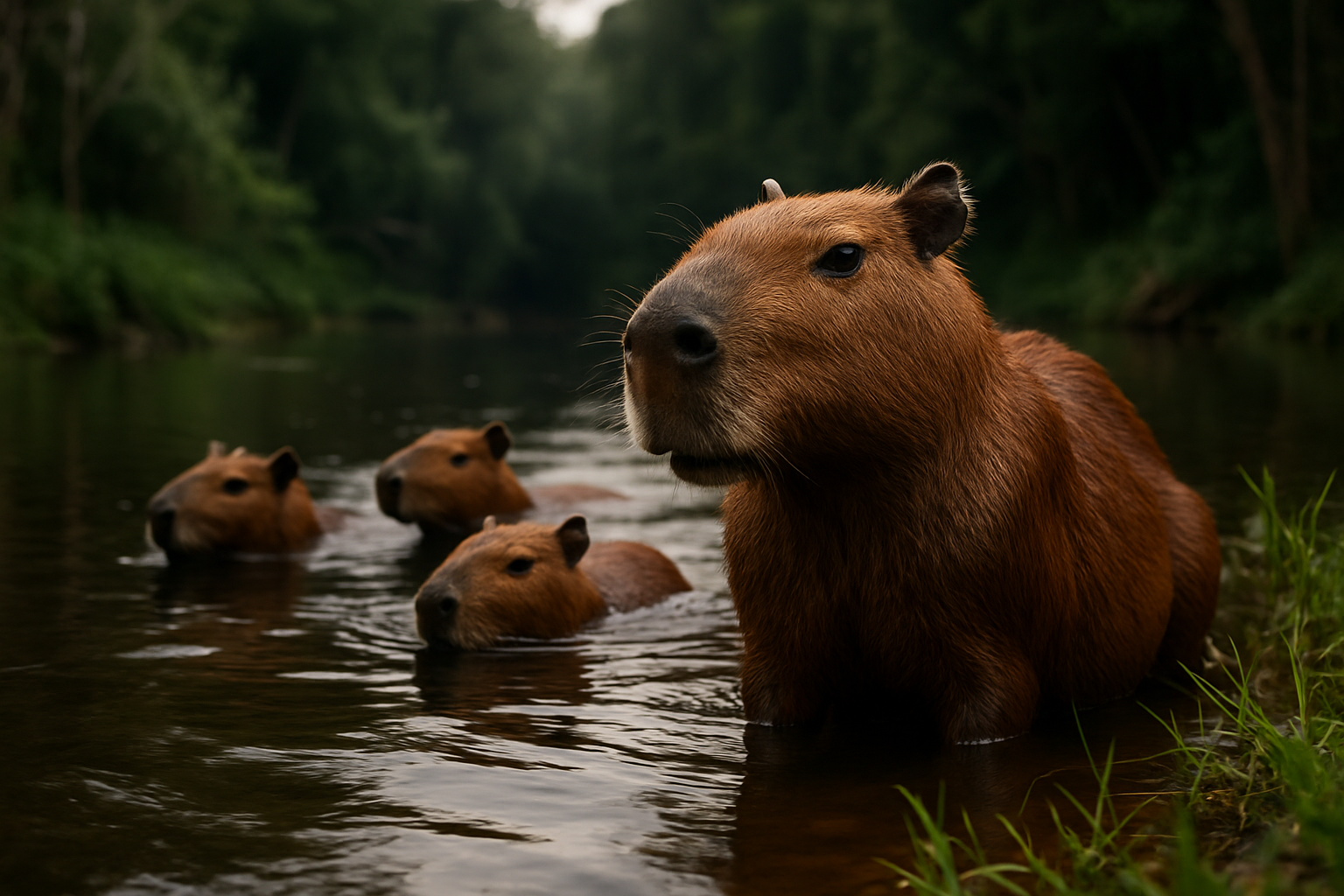The Surprising World of Capybara Companionship
In the realm of unconventional pets, one gentle giant is making waves: the capybara. These oversized rodents, native to South America, are increasingly finding their way into the hearts and homes of animal enthusiasts worldwide. But what makes these semi-aquatic creatures such captivating companions, and what does it take to provide them with the care they need?

The Capybara: Nature’s Gentle Giant
Capybaras, scientifically known as Hydrochoerus hydrochaeris, are native to the lush rainforests and grasslands of South America. These herbivorous mammals can grow up to 4 feet in length and weigh up to 150 pounds, making them the largest rodents on Earth. Despite their imposing size, capybaras are known for their calm and friendly demeanor, often forming close bonds with their human caretakers and other animals.
In the wild, capybaras live in social groups, spending much of their time grazing on grass and aquatic plants near bodies of water. This social nature translates well to captivity, where they often thrive on human interaction and companionship. Their intelligence and trainability have made them increasingly popular among those seeking unique animal companions.
The Rise of Capybaras as Pets
While still considered exotic, capybaras have been steadily gaining traction as pets in various parts of the world. This trend has been particularly noticeable in countries with more relaxed exotic pet regulations, such as Japan and certain states in the U.S. The increasing visibility of capybaras on social media platforms has also contributed to their rising popularity.
The estimated cost of acquiring a capybara as a pet can range from $1,000 to $3,000, not including the substantial expenses for proper housing, diet, and veterinary care. This significant investment has created a niche market for capybara-specific products and services, including specialized enclosures, dietary supplements, and veterinary expertise.
Creating a Capybara-Friendly Environment
Providing a suitable habitat for a capybara is crucial for its well-being. These semi-aquatic animals require ample space both on land and in water. A typical enclosure should be at least 12 feet by 20 feet, with a portion dedicated to a pool or pond deep enough for swimming. The area should be securely fenced, as capybaras are excellent climbers and can jump surprisingly high.
Temperature regulation is another critical factor. Capybaras are adapted to tropical climates and struggle in cold weather. In cooler regions, heated shelters and even indoor living spaces may be necessary during winter months. The enclosure should also include shaded areas to protect against overheating in summer.
Nutritional Needs and Health Considerations
A capybara’s diet primarily consists of grass, hay, and vegetables. In captivity, their diet should closely mimic their natural eating habits. Fresh grass or high-quality hay should make up the majority of their food intake, supplemented with a variety of vegetables like lettuce, carrots, and sweet potatoes. Some owners also provide specialized pelleted feeds designed for large herbivores.
Regular veterinary care is essential for capybaras, though finding a vet experienced with these exotic animals can be challenging. They require regular check-ups, vaccinations, and dental care. Capybaras are also prone to certain health issues, including skin problems and parasitic infections, which necessitate vigilant monitoring and preventive care.
Legal and Ethical Considerations
Before considering a capybara as a pet, it’s crucial to understand the legal implications. Many countries and regions have strict regulations or outright bans on keeping exotic animals as pets. Prospective owners must research local laws and obtain necessary permits or licenses.
Ethically, the decision to keep a capybara as a pet should not be taken lightly. These animals have complex social and environmental needs that can be challenging to meet in a domestic setting. Potential owners must carefully consider whether they can provide the space, resources, and long-term commitment required to ensure the animal’s well-being.
The Future of Capybara Companionship
As interest in exotic pets continues to grow, the trend of capybara companionship is likely to evolve. This shift may lead to increased research into capybara care, specialized veterinary training, and the development of products tailored to their needs. However, it also raises important questions about the ethics of keeping wild animals as pets and the potential impact on capybara populations in their native habitats.
The growing popularity of capybaras as pets underscores the need for responsible ownership practices and conservation efforts. As more people become fascinated by these gentle giants, it’s crucial to balance the desire for unique animal companions with the welfare of the animals and the preservation of their natural ecosystems.





